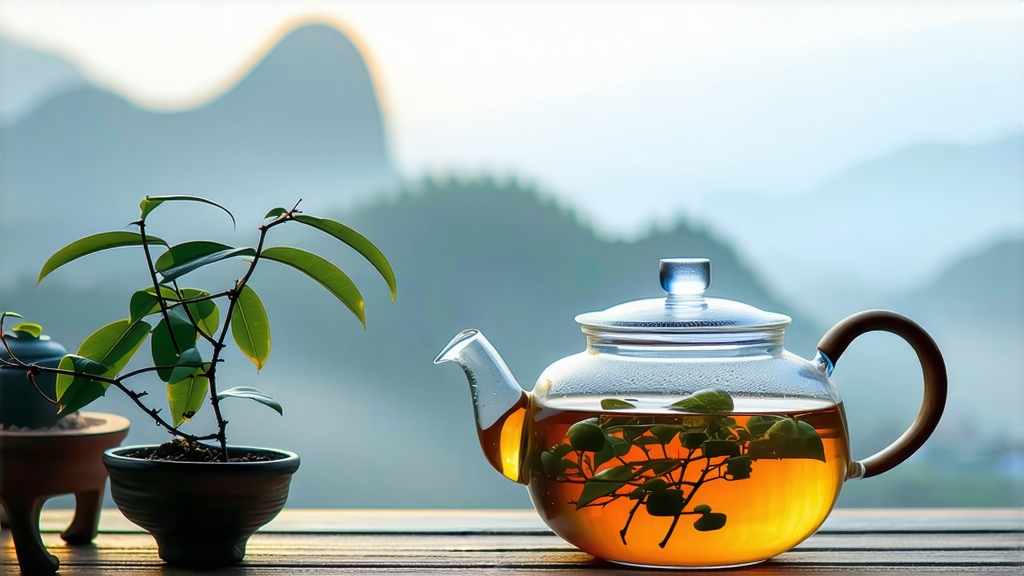
Tucked between the mist-laden peaks of Dongting Mountain in Jiangsu Province and the vast, wave-washed expanse of Lake Tai, Biluochun—literally “Green Snail Spring”—has captivated Chinese palates for more than a thousand years. To the uninitiated, the name evokes a tiny jade snail; to the connoisseur, it conjures an aroma so fragrant that Qing-dynasty poets claimed it “drifts beyond the cup and fills the entire studio.” This essay invites the international reader to journey through the micro-climate, micro-history, and micro-craft that elevate one of China’s tiniest tea leaves into one of its greatest green teas.
Historical whispers place Biluochun’s birth during the late Tang dynasty, when tea-picking monks from the Moon-Worshiping Temple noticed that wild tea shrubs growing among peach, plum, and apricot trees produced leaves of uncanny perfume. The blossoms lent their nectar to the leaf; the lake reflected sunlight back onto the bushes, slowing oxidation; and the mountain’s perpetual cloud curtain acted like a natural shade-cloth, boosting chlorophyll and amino acids. By the Ming dynasty the tea had entered imperial tribute lists, and the Kangxi Emperor (r. 1661-1722) is said to have renamed it “Biluochun” after its spiral shape and spring harvest, replacing the humbler moniker “Xia Sha Ren Xiang” (“Scary-fragrant”). European tea texts of the 19th century record Russian caravans detouring through Suzhou solely to acquire “Pi-lo-chun,” convinced that its aroma could out-perfume any black tea in the Saint Petersburg Winter Palace.
Today, the Chinese government recognizes two authentic appellations: Dongting Dongshan (East Mountain) and Dongting Xishan (West Mountain), both islands in Lake Tai rather than true mountains. Within these 17 square kilometers, clonal cultivars such as “Dongshan Xiaoye” and “Fuding Dabaicha” are grafted onto 300-year-old trunks, creating genetic mosaics that balance yield with haunting aromatics. Beyond the lake, similar leaf styles are produced in Sichuan, Guizhou, and Zhejiang, but only the Taihu microclimate yields the textbook notes of apricot kernel, orchid, and freshwater chestnut that judges seek at the annual National Tea Evaluation.
Harvest begins when the lake’s morning mist still clings to tea bushes like silk gauze. Pickers—usually women whose fingers are small enough to pinch without bruising—pluck the “one bud with one unfolded leaf” standard, a mere 1.5 centimeters in length. A full day’s basket weighs barely 500 grams fresh, shrinking to 100 grams after firing. The plucking window spans Qingming (early April) to Grain Rain (late April); any later and the amino-acid-to-polyphenol ratio tilts, flattening sweetness into rough astringency. Night plucking is avoided because lake breezes raise humidity above 85 %, risking red edges during the kill-green stage.
Crafting Biluochun is a four-act drama performed on bamboo trays within two hours of plucking. Act I, “Withering,” lasts 30 minutes under gentle mountain wind; the leaf loses 8 % moisture and its grassy edge. Act II, “Kill-green,” demands a drum-shaped pan heated to 180 °C. The tea master tosses 250 grams of leaves in rhythmic arcs, using only the heel of his palm to avoid fingernail cuts that would leak juices and darken color. In 3–4 minutes the leaf temperature spikes to 85 °C, deactivating enzymes while locking in jade green. Act III, “Rolling,” is where the signature spiral is born. The master cups leaves like a fortune-teller reading tea leaves in reverse, applying 0.8 kilograms of pressure while rotating his wrists 45 times per minute. Cell walls rupture, amino acids coat the surface, and the leaf curls into a tight shell no larger than a garden snail. Act IV, “Drying,” sees the same pan cooled to 60 °C; leaves are tumbled for 20 minutes until moisture drops to 6 %. A final hand-sorting under full-spectrum LED light removes any yellow flakes, ensuring uniform emerald hue.
Water is the silent ingredient. Lake Tai’s soft water (45 ppm TDS) is hauled uphill in cedar buckets to the tea studio, but international